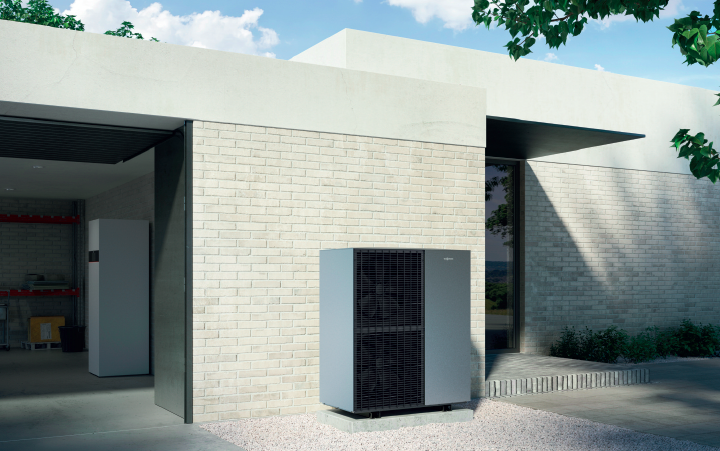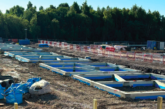
Peter Spurway, Head of Renewables at Viessmann Climate Solutions UK, explains how housebuilders and architects can be futureready: from all-electric homes to Zero Bills and smart grids.
The Future Homes Standard consultation is highly likely to herald the specification of heat pumps and other electric heating technologies in new build UK homes. With this, developers are now in the business of building “smart homes” where all heat and power is one ecosystem. This is fuelled by electricity and managed by a Home Energy Management System (HEMS), such as Viessmann’s One Base platform. Consuming that electric power could be a heat pump, MVHR system, the charging of electric vehicles and general household demand. Domestic power generation via solar PV, and batteries for storage, are other potential elements of the ecosystem.
Specifying the right foundations in terms of HEMS platform and compatible smart technologies, in conjunction with services from utility providers, is a rapidly emerging requirement. Forward-thinking housebuilders that get this right will deliver customer satisfaction at a property level and help determine a successful path to a model for net zero living. As we move toward end-to-end systems integrating PV with batteries, heat pumps and EV charge points, due consideration is needed at the heating design stage to ensure there is no clash of services in the developed design phase.
Furthermore, housebuilders are increasingly looking to the services of MCS-accredited installers and designers to undertake their installation and specification requirements. Viessmann Climate Solutions UK is able to provide an on-site MCS sign off service to new-build developers across each of its residential brands. Additionally, all of its heat pumps offer features to harness smart tariffs for new home buyers and reduce the OPEX for the homeowner.
Some controllers offer smarter, automated functionalities and bring additional benefits to heat pump users. For example, heat pumps from Carrier and Riello (sister brands to Viessmann) harness the Octopus Energy Agile tariff by means of intelligent third-party controls such as Homely or the Passiv Smart Thermostat. These self-learning controllers optimise Riello heat pumps to operate when they can take full advantage of the off-peak electricity rate without sacrificing comfort. In contrast, a type-of-use tariff, such as OVO Energy’s Heat Pump Plus add-on of 15p/kWh (at the time of writing), is available to customers of Viessmann’s Vitocal 150-A and 151-A domestic air source heat pumps. This brings an annual saving of up to £300 on the running costs of a heat pump, in a representative home, which has the minimum allowable seasonal coefficient of performance (SCoP) of 2.8, compared to the company’s standard variable tariff.
The type-of-use add-on principle is increasingly being applied to domestic EV charging as well. During the transition phase to a new pure-electric, pure heat pump world, manufacturers and energy suppliers are increasingly forging partnerships, but the UK market is not there yet with infinite connectivity between different heat pumps and tariffs. Property developers should therefore choose manufacturers and installers wisely, favouring those with interoperable products.
Many readers will be aware of recently introduced, disruptive, housebuildertargeted initiatives that allow customers to move into homes that are equipped with a heat pump, battery and solar panels, and where there is a no energy bill guarantee for a certain period of time. The new dominance of the utility provider in a housing development’s consumer marketing offer is only set to continue.
In the near future (the UK is somewhat behind other countries), energy companies will invite housing developments to join their smart grids, or virtual power plants. Using cloud-based platforms that control distributed energy assets to match supply and demand, they can take green energy as it becomes available by wind or solar and “dump” it into individual heat pumps, EVs and batteries within its grid.
Through its existing, integrated, futureready One Base software platform and commercially available APIs, all Viessmann products and digital services are interoperable with such smart grids today, enabling electricity networks to automate and control these assets over the cloud, to combat peak and off peak usage patterns.
For example, Vitocharge VX3 batteries can provide a virtual power plant to support grid balancing, while Vitocal heat pumps, Vitovent MVHR and Viessmann Wallbox technologies can provide demand shifting. It is good news for housebuilders that many smart technology providers are already prepared for this future.









